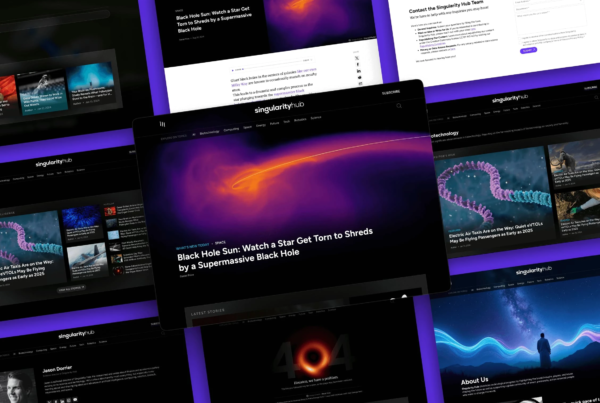In the ever-evolving digital landscape, businesses need to stay ahead by delivering personalized experiences to their audiences. Enter the DXP platform: Digital Experience Personalization platform, which is now critical infrastructure for content-driven companies (particularly high-traffic websites) to grow revenue.
But what exactly is a DXP platform, and why is it so essential? Let’s demystify.

Understanding the Concept: DXP Platform
A DXP platform, or Digital Experience Personalization platform, is designed to create unique and tailored experiences for categories of audiences (and, eventually via AI, individuals themselves). By engaging audiences and customers with tailored content, video, prose, imagery, and calls to action, businesses/brands can resonate more with modern customers, and earn more revenue.
For content-driven companies in the 2020s, the key to unlocking more earned revenue is conveying the brand’s authentic passion for a given endemic category. The DXP platform’s job is communicating that passion, acting as a central hub where brands and their employees create, manage, and optimize their various customer touchpoints: (deep breath) laptop/desktop, work mobile, personal mobile, connected TV, apps, email, watch, tablet, billboards, digital ads, social media, PR earned media, websites, mobile apps, video games, movies, and social media— alongside AI.
Personalization is exceedingly important in today’s Internet. AI-generated content immediately feels inauthentic, trust in news sources continues to wane, and brands that feel too far away from their customers fail (sometimes dramatically). Utilizing a DXP platform, businesses can gain more consumer trust, and a deeper understanding of their customers’ preferences, behaviors, and needs—ultimately driving customer satisfaction, loyalty, and revenue growth.
%20platform.%20It%20should%20include%20elements%20like%20a%20moder.webp)
Key Features and Benefits: DXP Platform
A DXP platform offers a range of key features that can greatly enhance an organization’s digital experience capabilities. Some of these include:
- Content management: A DXP platform provides robust content management capabilities, allowing businesses to create, edit, and publish content across multiple channels/screens. This enables seamless content delivery and ensures consistency in messaging and branding.
- Personalization: With a DXP platform, organizations can deliver personalized experiences to their customers via first-party data and insights. This includes personalized content recommendations, targeted marketing campaigns, and tailored user experiences based on individual preferences and behaviors.
- Omnichannel capabilities: A DXP platform enables businesses to deliver consistent experiences across multiple channels, including websites, mobile apps, social media, and more. This ensures that customers have a seamless and cohesive experience, regardless of the platform they choose to engage with.
- Analytics and insights: DXP platforms provide robust analytics and reporting capabilities, allowing organizations to track and measure the effectiveness of their digital experiences. This data-driven approach enables businesses to make informed decisions and optimize their strategies for better results.
- Integration capabilities: A DXP platform integrates with various systems and technologies, such as customer relationship management (CRM) systems, marketing automation platforms, and e-commerce solutions. This seamless integration streamlines workflows and enhances overall efficiency.
The benefits of implementing a DXP platform include improved customer engagement, increased conversion rates, enhanced brand loyalty, streamlined content management processes, and better ROI on digital marketing efforts.
With regards to revenue specifically, there are two main revenue growth drivers worth calling out that a DXP platform should provide:
#1: Flawless User Experience Across Devices
A significant part of growing revenue through personalization involves delivering a seamless user experience. Content must render quickly and efficiently across various devices, including laptops, mobile phones, connected TVs, apps, emails, smartwatches, tablets, billboards, digital ads, social media, and earned media. A flawless user experience ensures that users remain engaged, no matter how they choose to interact with a brand.
#2: Integrating Monetization with Content
Another crucial aspect of revenue growth through personalization is integrating monetization into the content flow. Instead of distracting users with intrusive ads, modern companies are creating custom ads that blend seamlessly with their content. For example, Donut Media generates over 50% of its revenue through custom ads, enhancing both the business model and the user experience. This approach makes the advertising feel more authentic and relevant to the audience.
DXP Platform: The Role of a Headless CMS
To achieve true digital experience personalization, a headless CMS is indispensable. A headless CMS allows brands to use a GraphQL API to deliver only the necessary content to any device or screen as quickly as possible. This ensures that content is always fast and responsive, crucial for maintaining user engagement.
Two other benefits of a headless CMS make it indispensable as part of a DXP platform:
#1: Connecting Content to Commerce
A headless CMS enables the integration of content and commerce through first-party data. This connection allows businesses to personalize experiences further and continuously increase revenue. By leveraging first-party data, companies can offer highly targeted content and products to their users, driving higher engagement and conversions.
#2: Designing Modern Visual Experiences
Modern users prefer visually appealing online experiences. A headless CMS allows for the creation of cutting-edge visual designs that attract and retain users. This flexibility is vital for high-traffic websites that need to stand out in a crowded digital space.
DXP platforms can only be successful if they drive tangible business outcomes and deliver exceptional digital experiences. Headless is a part of this formula.
Challenges and Considerations: Implementing DXP platforms

While implementing a DXP platform can offer numerous benefits, there are also certain challenges and considerations to keep in mind. Some of these include:
Analysis / Paralysis: DXP platforms can be complex to implement and require significant technical expertise. Focus on driving 80% of value in 20% of the allotted time.
Integration timelines: Integrating a DXP platform with existing systems and technologies can be challenging. It is crucial to carefully plan and execute the integration process to avoid any disruptions or compatibility issues.
Change management: Implementing a DXP platform often involves changes in workflows and processes. It is important to have a change management strategy in place to ensure smooth adoption and minimize resistance from employees.
Data privacy and security: DXP platforms handle a vast amount of customer data, making data privacy and security a top priority. It is crucial to implement robust security measures and comply with relevant data protection regulations.
By addressing these challenges and considerations proactively, organizations can maximize the benefits and ROI of a DXP platform.
Future Trends and Advancements: DXP Platform Industry
The DXP platform industry is continuously evolving, and several future trends and advancements can be expected. Some of these include:
Artificial Intelligence (AI) and Machine Learning (ML): AI and ML technologies will play a crucial role in enhancing personalization capabilities within DXP platforms. These technologies can analyze vast amounts of data and provide real-time insights to deliver hyper-personalized experiences.
Voice integration: Voice-enabled devices and chatbots are becoming increasingly popular, and integrating them with DXP platforms will enable more seamless and interactive user experiences. This includes voice search, virtual assistants, and chatbot-powered customer support.
Internet of Things (IoT) integration: As IoT devices continue to proliferate, integrating them with DXP platforms will enable organizations to deliver personalized experiences based on real-time data from connected devices. This can include personalized recommendations, automatic adjustments based on user preferences, and more.
Enhanced analytics and predictive insights: Future DXP platforms will provide more advanced analytics capabilities, allowing organizations to gain deeper insights into customer behaviors and preferences. This includes predictive analytics, sentiment analysis, and real-time data visualization.
These future trends and advancements will further empower organizations to deliver exceptional digital experiences and stay ahead in the competitive landscape.
——
Any other questions about What is a DXP platform that we can demystify? Please let us know: hello@flexpress.ai.




